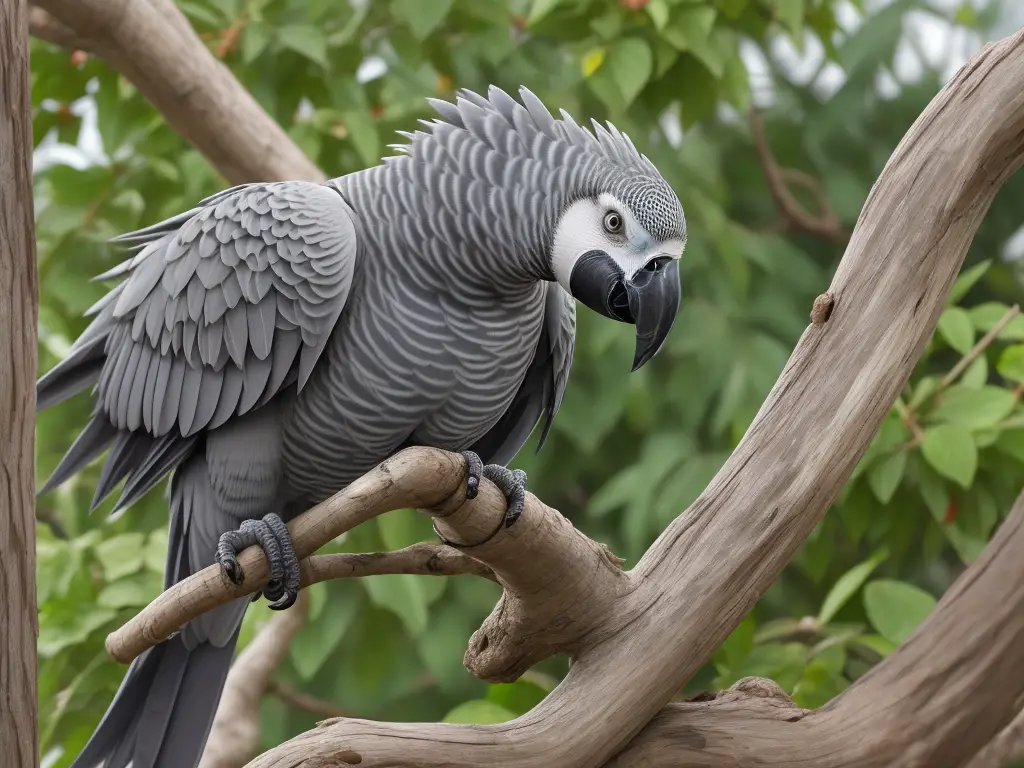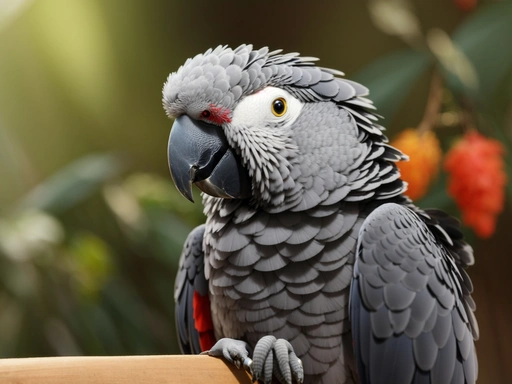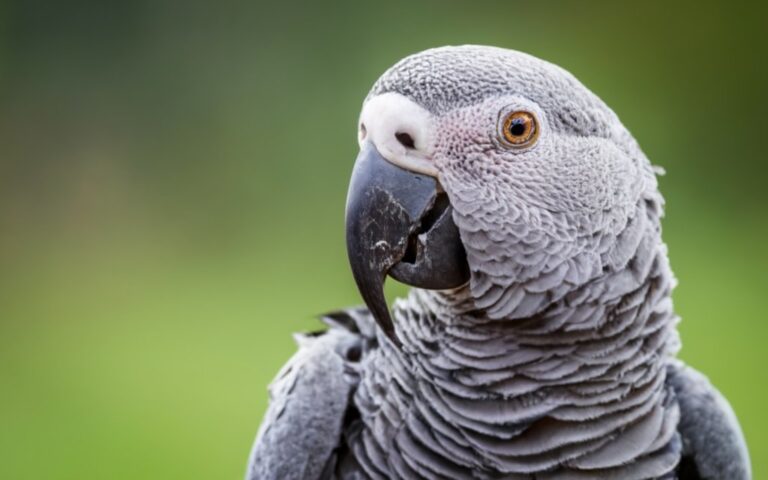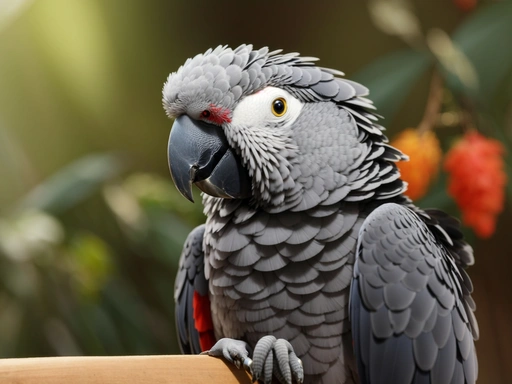How To Trim African Grey Parrot Nails?
Key Takeaways:
- Regularly trim your African grey parrot’s nails to prevent them from becoming too long.
- Use proper nail clippers and be cautious to avoid cutting too close to the quick.
- Create a comfortable and stress-free environment when trimming your parrot’s nails.
- Consult with an avian veterinarian or a bird grooming professional if you are unsure or need assistance with nail trimming.
Do you have an African grey parrot as a pet? Have you noticed their nails starting to get a little too long?
Keeping your parrot’s nails properly trimmed is essential for their overall health and well-being.
In this article, I will guide you through the process of trimming your African grey parrot’s nails, step by step. We’ll explore why nail trimming is important, how to understand your parrot’s nails, and how to prepare for a successful trimming session.
I’ll also discuss post-trimming care and provide answers to some frequently asked questions.
Let’s ensure your beloved parrot stays comfortable and safe with well-maintained nails!
| Step | Description |
| Gather supplies | Collect nail clippers, styptic powder, and a towel or perch for support. |
| Prepare the parrot | Place the parrot on the towel or perch and hold it gently but firmly. |
| Inspect the nails | Examine each nail carefully to identify the quick (the blood vessel inside the nail). |
| Clip the nails | Using the nail clippers, carefully trim the tip of each nail, making sure to avoid cutting into the quick. |
| Use styptic powder | If a nail bleeds, apply styptic powder to stop the bleeding. |
| Give treats and praise | Reward the parrot with treats and praise to make the experience positive and reinforce good behavior. |
Why trimming your African grey parrot’s nails is important
Trimming your African grey parrot’s nails is important for their overall nail and beak health and to prevent injuries and discomfort.
Nails and beak health
Nail and beak health is important for African grey parrots.
Overgrown nails can lead to discomfort and injuries.
A parrot’s beak is used for eating, climbing, and playing, so it’s essential to keep it in good condition.
Regular nail trimming and providing appropriate toys and perches can help maintain healthy nails and beak.

Understanding your African grey parrot’s nails
African grey parrot nails are an important part of their anatomy that require regular attention. Understanding their structure and knowing when to trim them is essential for their health and well-being.
Anatomy of African grey parrot nails
The nails of African grey parrots are made of keratin, just like human nails.
They have a curved shape and are usually translucent.
African greys have four toes, with two pointing forward and two pointing backward.
Each toe has a nail at the end.
It’s important to know the normal length of their nails and recognize signs that they need trimming.
Normal nail length
The normal nail length for African grey parrots should not exceed the length of their toes.
Ideally, the nails should not touch the ground when your parrot is standing on a flat surface.

Signs that your parrot’s nails need trimming
Signs your parrot’s nails need trimming:
- Nails touching the ground
- Difficulty perching or walking
- Snagging on toys or fabric
- Painful scratching during interactions
- Excessive nail length or curling
- Damaged furniture or skin from sharp nails.
Preparing for a nail trimming session
To prepare for a nail trimming session with your African grey parrot, gather the necessary tools and create a calm and comfortable environment.
Gathering the necessary tools
To gather the necessary tools for trimming your African grey parrot’s nails, you will need a few key items. These include a pair of specialized bird nail trimmers, such as guillotine or scissor-style clippers.
Additionally, having a styptic powder or cornstarch on hand can help in case of any accidental bleeding.
Lastly, it’s useful to have a towel or small blanket to wrap your parrot in for a secure and comfortable grip during the trimming process.

Creating a calm and comfortable environment
To create a calm and comfortable environment for trimming your African grey parrot’s nails, you need to ensure a quiet and peaceful atmosphere.
Find a quiet room where you won’t be disturbed and close any windows or doors to minimize distractions.
Dimming the lights can also help create a more relaxed atmosphere.
Play soft, calming music in the background to help soothe your parrot.
Additionally, make sure the room temperature is comfortable, neither too hot nor too cold.

Ensuring your parrot is relaxed
To ensure your parrot is relaxed during a nail trimming session, create a calm and comfortable environment. Use soft lighting, soothing music, and keep distractions to a minimum.
Give your parrot ample time to adjust and feel at ease.
Establish trust through positive reinforcement and gentle handling techniques.
Step-by-step guide to trimming African grey parrot nails
Proper handling techniques: Ensure that you handle your African grey parrot properly and make them feel comfortable before you begin trimming their nails.
Proper handling techniques
Proper handling techniques for trimming your African grey parrot’s nails are essential to ensure their safety and comfort. Here are some key tips:
- Approach your parrot slowly and calmly to avoid startling them.
- Gently secure their body, ensuring they feel supported and safe.
- Talk to your parrot in a soothing voice to help them relax.
- Maintain a firm yet gentle grip on their foot while trimming their nails.
- Be cautious not to apply too much pressure or accidentally cut the quick.
- Take breaks if necessary, allowing your parrot to rest and calm down.
- Reward your parrot with a treat or praise after each successful trimming session.
Always prioritize your parrot’s well-being and adjust your handling techniques based on their individual comfort level.
Identifying the safe area to trim
To identify the safe area to trim your African grey parrot’s nails, look for the translucent portion of the nail called the quick.
Avoid cutting into the quick, as it contains sensitive nerves and blood vessels.
Trim only the clear, hard part of the nail, being cautious not to go too close to the quick to prevent any pain or bleeding.

Using the right nail trimming tool
Using the right nail trimming tool is crucial for safely and effectively trimming your African grey parrot’s nails.
A specialized bird nail trimmer, such as a guillotine-style or scissor-style trimmer, is recommended.
Avoid using human nail clippers or scissors, as they may cause injury to your parrot’s nails.
Dealing with resistant parrots
Positive reinforcement training
Positive reinforcement training involves using rewards and praise to encourage desired behaviors in your African grey parrot.
This method focuses on positive experiences to reinforce good behavior and is a gentle and effective approach.
By rewarding your parrot with treats, toys, or verbal praise when they exhibit the desired behavior, you can help them understand what you expect from them.
Positive reinforcement training not only helps you trim your parrot’s nails but also strengthens the bond between you and your feathered friend.
Post-trimming care and safety tips
After trimming your African grey parrot’s nails, attend to any bleeding or accidents and take necessary precautions to prevent over-growth in the future.
Additionally, establish a regular maintenance schedule to keep their nails at an appropriate length.
Treating any bleeding or accidents
If you accidentally cut your African grey parrot’s nail too short and it starts bleeding, don’t panic. Apply gentle pressure with a clean cloth or styptic powder to stop the bleeding.
Avoid using any household products like flour or cornstarch, as they can be harmful.
If the bleeding doesn’t stop or the cut looks severe, contact a avian veterinarian immediately.
Preventing over-growth in the future
To prevent over-growth of your African grey parrot’s nails in the future, regular maintenance is key. Here are a few tips:
- Trim the nails regularly: Establish a consistent schedule for nail trims to keep them at a manageable length.
- Provide appropriate perches: Offer perches of different sizes and textures to help naturally wear down the nails.
- Encourage exercise: Engage your parrot in physical activities like flying and climbing to keep their nails naturally worn down.
- Offer grooming toys: Provide toys or objects that encourage your parrot to perch and play, which can help maintain nail length.
- Monitor their diet: Ensure your parrot’s diet is balanced and includes essential nutrients for overall health, which can also contribute to nail health.
Remember, preventing over-growth is an ongoing process, so regular monitoring and maintenance are necessary to keep your African grey parrot’s nails in good condition.
Regular maintenance schedule
Regular maintenance schedule for trimming your African grey parrot’s nails depends on the rate of nail growth. On average, nails need to be trimmed every 4 to 6 weeks.
However, keep an eye on your parrot’s nails and look out for signs that they are getting too long, such as difficulty perching or nails curling back.
Trim them accordingly to ensure your parrot’s comfort and health.
Frequently Asked Questions about trimming African grey parrot nails
How often should I trim my African grey parrot’s nails?
To keep your African grey parrot’s nails at a healthy length, you should trim them every 4-8 weeks.
It’s important to monitor the length regularly and trim when necessary to prevent overgrowth and discomfort.
Regular maintenance will keep your parrot’s nails in good condition and prevent potential injuries.
Can I use human nail clippers to trim my parrot’s nails?
No, you should not use human nail clippers to trim your parrot’s nails. They are not designed for the specific shape and thickness of bird nails.
Instead, use specialized bird nail clippers or nail files to ensure a safe and effective trimming process.
Final Verdict
Trimming your African grey parrot’s nails is essential for their overall health and well-being. Regular nail maintenance prevents injuries, discomfort, and potential infections.
Understanding your parrot’s nail anatomy and signs that they need trimming is crucial.
Preparing for a trimming session, using proper techniques and tools, and dealing with resistant parrots are all important steps to follow. After trimming, providing post-trimming care and adopting preventive measures ensures the safety and health of your parrot.
Remember, consult professionals when needed, and establish a regular maintenance schedule.
Your parrot will thank you for it.







